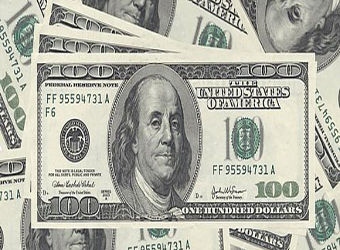The U.S. dollar was on track to post on Friday a fourth straight year of gains against a basket of major currencies, despite briefly tumbling against the euro during the Asian trading session on thin liquidity.
The dollar index, which measures the greenback against a basket of six major rivals, was on track to gain 3.5 percent for the year, even as the euro briefly climbed nearly two full cents in overnight trading to $1.0651, its highest since Dec. 14.
The index has gained 4.3 percent since the Nov. 8 U.S. presidential election on expectations that U.S. President-elect Donald Trump’s plan to boost fiscal stimulus would benefit the currency. The Federal Reserve’s projections on Dec. 14 of three rate hikes for 2017 instead of the two foreseen in September have also contributed.
Several analysts have said the dollar’s uptrend remains intact next year, but they have not ruled out the risk of declines in the greenback, given their doubts surrounding how much dollar appreciation a Trump White House will tolerate.
“Much depends on how the Trump presidency and the Chinese economy work out,” said Marshall Gittler, chief market analyst for retail broker FX Primus. “In general, I expect the dollar to continue to gain.”
The dollar index was last down 0.37 percent at 102.30, down from a 14-year high of 103.65 hit on Dec. 20. The dollar was up 0.18 percent against the yen at 116.74 yen, but was set to post its first yearly loss in five years against the Japanese currency, of about 3 percent.
Sterling, which has lost more than 16 percent of its value against the dollar to mark its worst year since 2008 on worries over Britain’s June 24 “Brexit” vote to leave the European Union, was last up 0.48 percent at $1.2316.
The euro was up 0.40 percent against the dollar at $1.0533, though down nearly a full cent from its session high.
“The move is completely generated out of a New Year’s Eve lack of liquidity,” said Jason Leinwand, founder and chief executive of FirstLine FX in Randolph, New Jersey.
Other big losers this year against the dollar have been the Mexican peso and the Chinese yuan, which have lost 20.2 percent and 6.9 percent, respectively.
Source: Reuters



